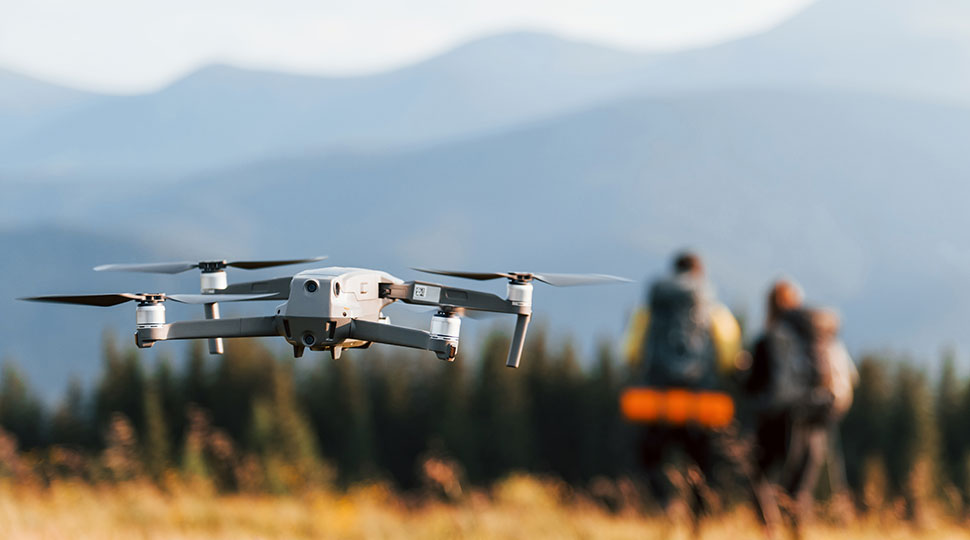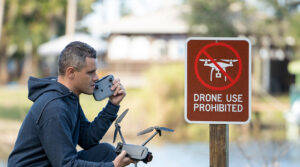Drones, also known as unmanned aerial vehicles (UAVs), have revolutionized various industries, including the field of wildlife photography.

These remote-controlled devices are equipped with cameras that enable them to capture stunning and unique images from various angles and perspectives.
The use of drones in capturing wildlife photos has brought numerous benefits, such as increased accessibility, improved safety, and reduced costs. However, this technology also comes with its downsides, including disturbance to wildlife and the potential for misuse.
This article will take an in-depth look at the impact drones have had on nature photography.
Get the latest articles in your inbox fresh and ready to read …
Get the New To Drones "All Access Pass"
All Access Pass members enjoy unlimited access to entire articles – 100% FREE
By signing up you agree to our Terms of Service and Privacy Policy. You also agree to receive our newsletters (you can easily and quickly opt-out at any time).
You will receive free access to all of our articles while you are a member of the site.
Advantages of Using Drones for Wildlife Photography
Capturing a Wider Range of Angles and Perspectives
Drones allow photographers to capture a wide range of angles and perspectives that would be impossible to achieve using traditional techniques. With the help of drones, photographers can now take aerial shots, low-angle images, and even close-up photographs of wildlife without disturbing their natural habitat. This has led to the creation of a whole new genre of nature photography, allowing photographers to unlock the secrets of nature in ways that were previously unthinkable.
Accessibility to Areas That Would Otherwise Be Difficult or Impossible to Reach by Foot
Drones offer unparalleled access to remote areas and hard-to-reach locations that would otherwise be difficult or impossible to explore on foot. Wildlife photographers can now venture into dense forests, rugged mountains, and vast wetlands, capturing images of animals in their natural habitats that were previously off-limits. This increased accessibility has opened up new opportunities for both professional photographers and hobbyists alike, allowing them to capture the beauty and diversity of the natural world in greater detail than ever before.
Increased Safety for Photographers
Wildlife photography can sometimes involve risky situations, such as getting close to dangerous animals or navigating treacherous terrain. Drones have significantly improved safety levels in the field, as photographers no longer need to put themselves in harm’s way to capture stunning images. Instead, they can control their drones from a safe distance, reducing the risk of injury or accident.
Lower Cost Than Other Aerial Photography Methods
In the past, aerial photography required the use of helicopters or planes, which could be expensive and logistically challenging. Drones have made aerial photography more accessible and affordable, as they are significantly cheaper than traditional methods. This has allowed more photographers to experiment with aerial shots and capture unique images that were once reserved for those with larger budgets.
Disadvantages of Using Drones for Wildlife Photography
Disturbance Caused by Noise From the Drone
One of the main concerns surrounding the use of drones in wildlife photography is the disturbance caused by the noise they produce. Some animals are sensitive to noise and may become scared or stressed when they hear a drone approaching. This can lead to unnatural behavior and potentially affect the quality of the photographs captured.
Risk Posed by Collision With Birds, Trees, or Other Obstacles
Drones can pose a risk to wildlife if they collide with birds, trees, or other obstacles in their path. These collisions can cause injury or even death to the animals involved, which is something that no responsible wildlife photographer would want to happen. Additionally, damage to the drone itself can be costly and may result in the loss of valuable footage.

Possibility of Misuse and Invasion of Animal Habitats
As with any technology, there is a possibility that drones could be misused in the field of wildlife photography. Some individuals may use drones to invade the privacy of animals, causing unnecessary stress and disturbance to their natural habitats.
This could have long-term consequences for the animals and the ecosystems they inhabit.
Potential Damage Caused by Crashed Drones in Remote Natural Environments
In some cases, drones may crash in remote natural environments, causing damage to the flora and fauna in the area. This can be particularly concerning in fragile ecosystems, where even a small disturbance can have significant consequences.
Cleared for Takeoff
Overall, drones have had a significant impact on the field of nature photography, offering a range of benefits, including increased accessibility, improved safety, and lower costs. However, there are also potential downsides to consider, such as disturbance to wildlife, the risk posed by collisions, and the potential for misuse.
As drones continue to grow in popularity, it is essential for photographers to be mindful of these potential issues and use the technology responsibly. By doing so, they can continue to unlock the secrets of nature and capture stunning images without causing harm to the environment or the animals they seek to photograph.








